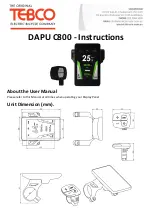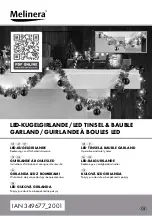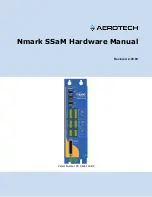
120 20170-204a
Paragon
PD
Technical Manual
23
4.5.5.1
DSR signal is High indicator
The “Data Set Ready” (DSR) indicator light,
located on the button bar (leftmost), is an RS-
232 protocol port indication. When lit, it indi-
cates proper connection and that the value is
High. The DMP protocol used requires that
DSR be normally asserted.
4.5.5.2
CTS signal is High indicator
The “Clear-to-Send” (CTS) indicator light, lo-
cated on the button bar (second indicator from
the left), is an RS-232 protocol port indication.
When lit, it indicates proper connection and that
the value is High. The DMP protocol used re-
quires that CTS be normally asserted.
4.5.5.3 Channel
Selection
Paragon
PD
uses its default radio channel. No
channel selection being available, all channels
are grayed-out and the “Show All Channel Fre-
quencies” button is disabled.
4.5.5.4 TXON
Tests
TXON test functions are selected by choosing
“Test” from the file menu, then “Modulated”,
“Unmodulated”, “Random” or “Square Wave”
command or by pressing the relevant button on
the Toolbar.
All other commands and buttons
are inactive during test transmissions.
4.5.5.4.1 Unmodulated
Carrier
Unmodulated carrier gives a clear carrier and is
frequently used for checking:
•
Frequency error
•
Forward and reverse power
Press the TXON (Unmodulated) button to
transmit an unmodulated 20-seconds test signal
on the channel selected or until the button is
pressed again.
Power check:
1-
Connect an in-line power meter between the
radio and the antenna.
Measure the forward and the reflected power
levels by powering TX ON. Reflected power
should be <5% of forward power (or as speci-
fied by System Eng.). See Table 9 for further
details.
4.5.5.4.2 Modulated
Carrier
Test transmission generates a carrier modulated
with 1kHz sinewave, at deviation level that de-
pends on model and network speed as shown in
Table 8.
This function is frequently used for checking
frequency deviation.
Press the TXON (Modulated) button to begin
transmitting a 20-seconds modulated test signal
on the channel or until the button is pressed
again.
4.5.5.5 Random
Data
Generates a 20-seconds random data signal.
Pressing the ‘’Stop’’’ button halts the ongoing
test.
This test function is used for checking low-
frequency balance and maximum deviation over
data.
•
Low-frequency balance check:
Helps to determine if the radio transmitter is
well balanced for data transmission.
Refer to Table 10 - Checklist B (General)
for values indicated in adjustment tables
under “Low Frequency Balance” step.
•
Maximum deviation check:
Helps to verify if the unit is within FCC
regulation emission masks.
Refer to Table 8 - Carrier deviations for Tone or
Data Modulation for maximum data deviation
values.
Random data test requires the use of an IFR
COM-120B service monitor with option 03:
30KHz IF filter and its DC coupled demodulator
output selected.
4.5.5.6 Square
Wave
Generates a 20-seconds 100 Hz square wave
used for low-frequency balance adjustments.
4.5.5.7
Addressing and Test
The “Address” and “Device” fields, the “Send”
button and the “Chat” message screen are used
to send messages to specific mobile or base or to
carry out RF test. Start by entering the address
of the mobile (or base station) you wish to send
a test message to or test:
















































